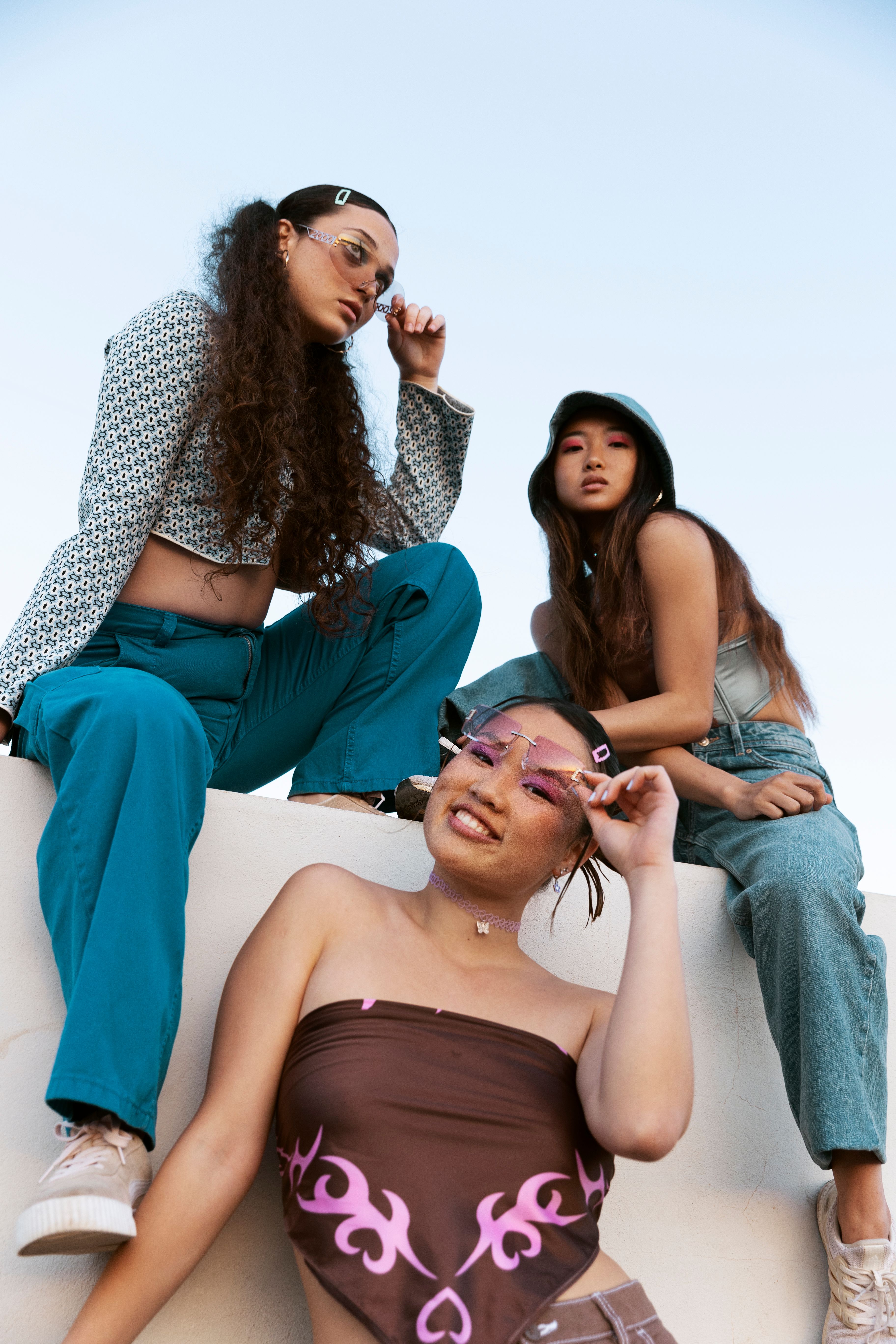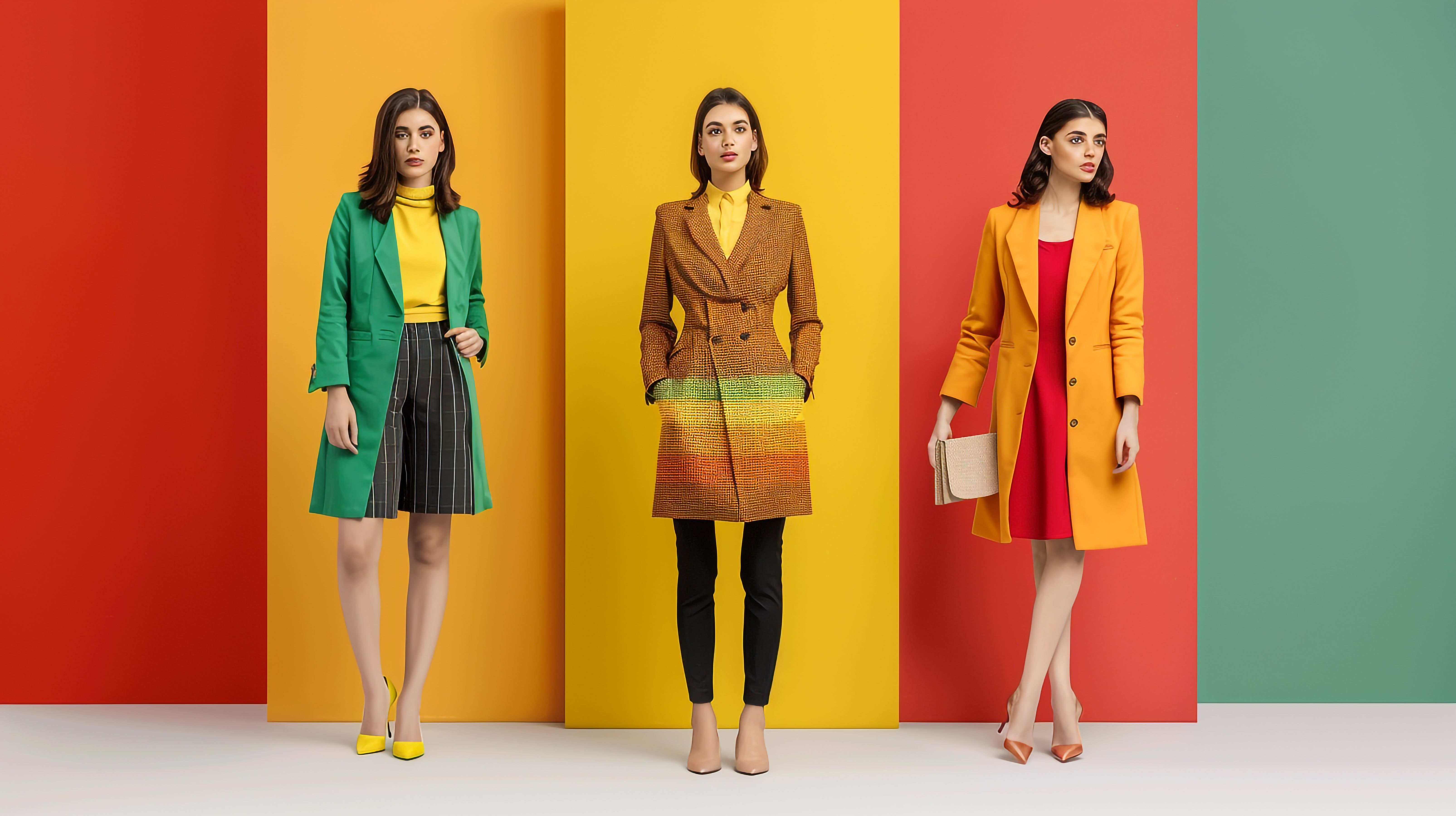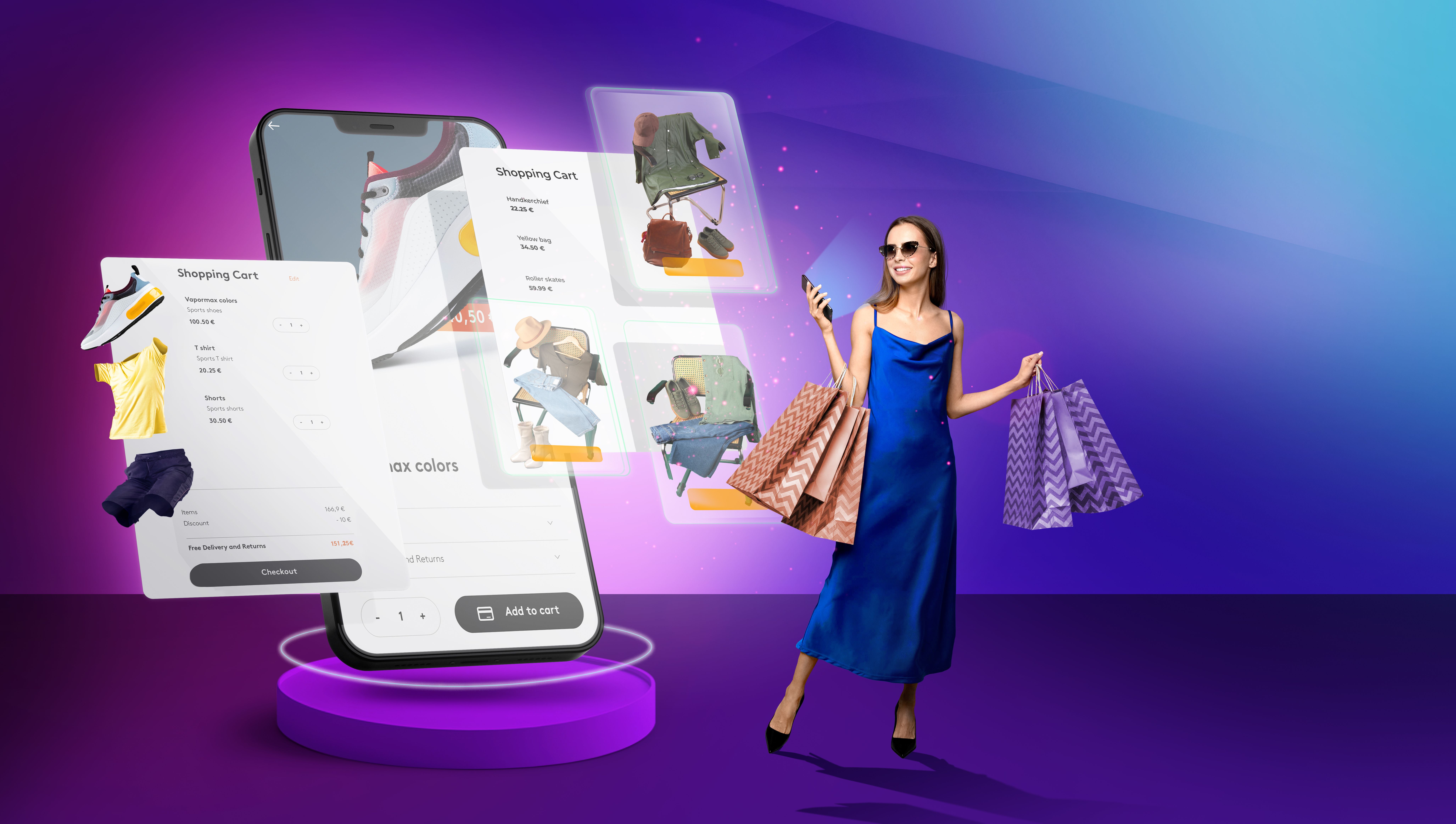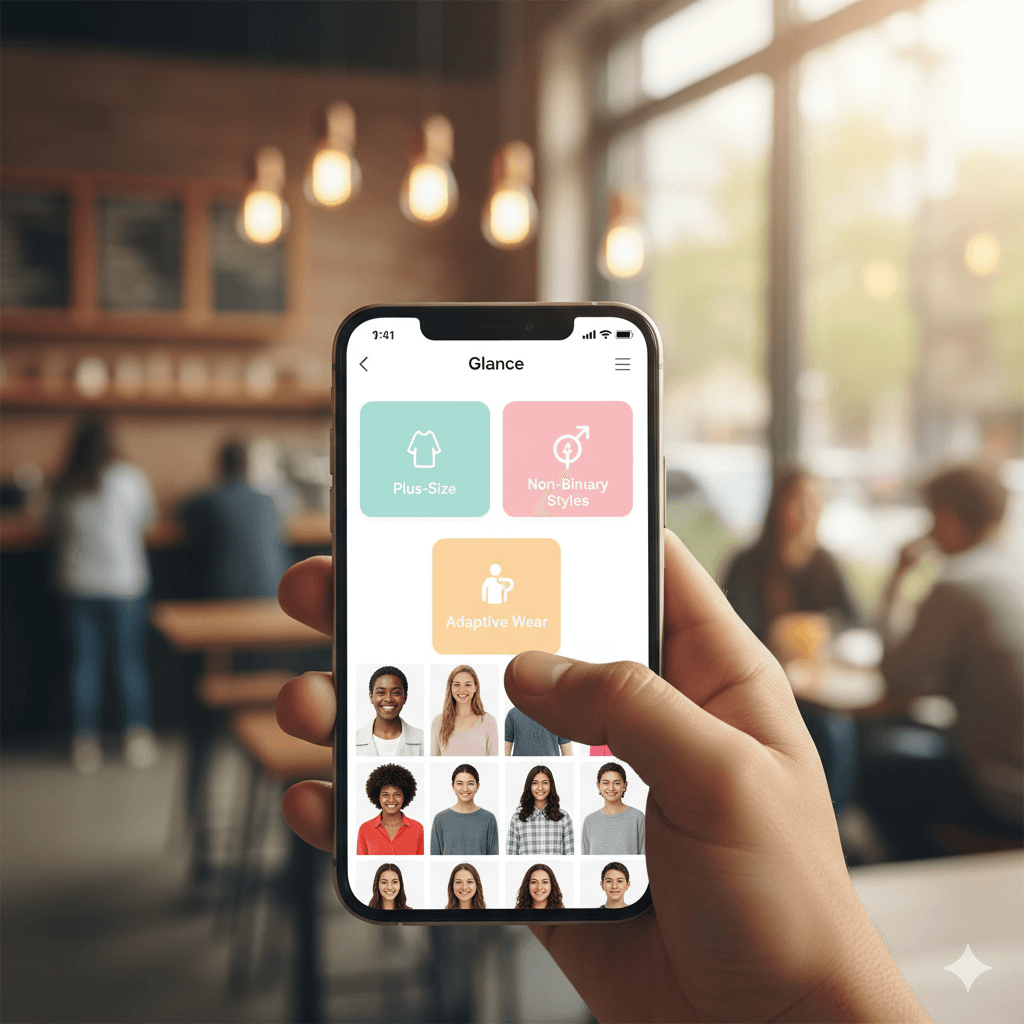How Fashion Inspiration Evolves Through Social Media
How to Use Fashion Color Psychology for Choosing Style?


Introduction
Before you say a word, the colors you wear say it for you. Ever wondered why you instinctively pick that black shirt for a presentation or reach for a bright kurta for a weekend get-together? That’s the invisible influence of fashion color psychology—the powerful link between what you wear and how you feel.
In India, colors are more than style—they’re tradition, emotion, and self-expression. From bridal reds to festive golds and peaceful whites, our wardrobes speak a language passed down through generations. Understanding fashion color psychology helps you tap into that language intentionally—so every outfit choice feels more ‘you’.
In this blog, we’ll break down how fashion color psychology works, the cultural meanings behind popular shades, how to pick colors for your skin tone, and how Glance AI makes smart color styling effortless. Ready to see your closet in a new light? Let’s decode the shades that shape your story.
What is Fashion Color Psychology?
Fashion color psychology explains how colors influence mood, confidence, and perception. It’s why brands choose specific palettes for collections and why you instinctively feel different when wearing certain colors.
Historically, cultures worldwide have attached meaning to colors. Red for passion, blue for calm, black for power. In Indian fashion, this is amplified—color isn’t just aesthetic; it carries symbolism. Weddings brim with reds and maroons. Festivals burst with yellows, oranges, greens. Even daily wear reflects subtle color psychology: earthy tones for simplicity, jewel tones for grandeur.
For you, understanding fashion color psychology means you can make your clothes work harder—reflecting not just trends but your mood, personality, and vibe every single day.
Color and Culture: India’s Deep Connection to Shades

In India, color is woven into our cultural fabric—literally. Every region, ritual, and community has colors tied to meaning.
Bridal red: A North Indian bride’s lehenga is often red—symbolizing prosperity, fertility, and auspicious beginnings.
White: In South India, brides sometimes wear white sarees with golden borders for elegance and purity, but in other communities, white can signify mourning.
Yellow & green: Popular for Haldi ceremonies and festivals—freshness, life, new starts.
Black: Traditionally avoided for weddings but loved in modern parties for its chic, commanding presence.
This deep cultural context means your wardrobe can blend tradition and trend. Understanding fashion color psychology lets you do both—honor what colors mean while styling them in fresh, personal ways.
How Colors Influence Mood & Perception
Colors aren’t just pretty—they create real emotional shifts. This is why fashion color psychology matters daily.
For example:
- Warm tones (reds, oranges) energize you and grab attention. Perfect for festive days or moments when you want to stand out.
- Cool tones (blues, greens) soothe, calm, and build trust—great for work calls or relaxed meet-ups.
- Dark shades like black or navy project authority, mystery, and sophistication—ideal for evening events or formal meetings.
- Pastels feel soft, approachable, and friendly. Think baby pink kurtis or mint green shirts for a light brunch vibe.
By tuning into fashion color psychology, you can shift how you feel and how others see you—without saying a word.
Popular Colors & What They Say About You

Here’s a deeper dive into everyday shades through the lens of fashion color psychology:
- Red: Dominant, passionate, festive. A red Banarasi saree or a bright Nehru jacket demands attention.
- Black: Timeless power. From black bandhgala jackets at weddings to a black dress for a night out, it never fails.
- White: Peaceful, pure, balanced. White chikankari kurtas, cotton shirts, or summer dresses feel fresh and calm.
- Blue: Reliable, soothing. Navy blazers, denim jackets, or sapphire kurtas for subtle confidence.
- Green: Harmony, hope. Olive jackets, emerald sarees—great for earthy yet elegant looks.
- Yellow: Playful, optimistic. Mustard kurtas, pastel yellow tops—perfect for cheerful days.
- Brown & Neutrals: Understated, stable. Coffee browns, taupes, and beiges are essentials for minimalist wardrobes.
Adding this layer of fashion color psychology to your daily outfits can make each shade more intentional and personal.
Pick Colors That Flatter Your Skin Tone
While fashion color psychology helps you pick colors that match your mood, undertones decide what actually flatters you. Here’s how:
- Warm undertones: If your veins look greenish, earthy colors like burnt orange, olive, and mustard suit you best.
- Cool undertones: If veins look bluish, jewel tones—ruby red, sapphire blue—make you glow.
- Neutral undertones: Lucky you—mix warm and cool tones. Experiment freely.
For Indian skin tones, rich colors like emerald, wine, maroon, and deep blue look timelessly good. Understanding this blend of undertone and fashion color psychology means every outfit feels effortless yet impactful.
Color Blocking & Combining Shades
Mastering color combos is next-level fashion color psychology. Color blocking helps you mix bold shades stylishly.
- Pair complementary colors on the wheel—like teal and coral.
- Balance bolds with neutrals—a beige palazzo with a crimson top.
- Use accessories to test bold pops—bright stoles, colorful juttis.
- Keep contrast in mind—dark lowers with bright uppers or vice versa.
In Indian wear, color blocking is everywhere: bright dupattas, contrast blouses, layered prints. Mastering it unlocks bolder, smarter style moves.
Seasonal Colors: Weather Meets Mood
Seasons add another layer to fashion color psychology.
Summer: Breathable pastels—baby blues, light pinks.
Monsoon: Warm earth tones—deep browns, olive greens.
Winter: Darker, luxurious shades—burgundy, emerald, charcoal.
Festivals: Diwali golds, Holi brights, Eid greens—each festival brings its own color story.
Tapping into seasonal colors helps you match mood with climate while staying stylishly rooted.
Common Color Mistakes to Avoid
Even with fashion color psychology, mistakes happen. Here’s what to dodge:
- Wearing too many bright shades with no neutral break.
- Ignoring undertones—makes outfits clash with your natural glow.
- Following trends blindly—neons might not be your vibe!
- Mismatched accessories—throwing off your outfit’s harmony.
- Seasonal mismatches—dark velvets in peak summer? No, thanks!
How Glance AI Makes Smart Color Styling Easy
If you love the idea of fashion color psychology but dread picking the right shades daily—Glance AI is your shortcut.
Glance AI:
- Learn your color likes and dislikes from what you save and skip.
- Suggests fresh combos for daily wear, work, or weddings.
- Recommends how to balance brights with neutrals.
- Evolves with your taste, so it only gets sharper over time.
With Glance AI, fashion color psychology becomes easy—smart color combos at your fingertips!
Real-Life Examples: Try These Combos
Ready to put fashion color psychology to work? Here are ideas to test today:
- Work Day: Navy blazer + crisp white shirt = calm, credible.
- Festive Function: Deep maroon kurta + gold dupatta = rich, traditional.
Casual Brunch: Olive green shirt + beige trousers = fresh, easy. - Night Out: Black dress + red clutch = powerful, striking.
Conclusion
Color is more than just a style choice — it’s your silent language. From subtle pastels to bold jewel tones, every shade in your wardrobe can influence your mood, reflect your culture, and shape how the world sees you. That’s the true magic of fashion color psychology — it helps you unlock the hidden power of color so you feel more confident and intentional every time you get dressed.
And you don’t have to decode it alone. With smart AI tools, you can make color choices that suit your undertone, match the moment, and bring your personal vibe to life — effortlessly. So the next time you reach for an outfit, remember: the right color doesn’t just complete your look — it completes your story.
FAQs
1. What is fashion color psychology?
Fashion color psychology is the study of how the colors you wear influence your mood, emotions, and how others perceive you. It helps you choose outfits that align with your personality, occasion, and cultural context.
2. How can fashion color psychology help me dress better?
Understanding fashion color psychology lets you pick shades that flatter your undertone, match the season, and send the right message. It’s about dressing with intention, not just trends.
3. Does fashion color psychology work for Indian outfits too?
Absolutely! From vibrant sarees to elegant kurtas, Indian clothing is deeply connected to color symbolism. Fashion color psychology helps you blend cultural meaning with modern style.
4. How does AI use fashion color psychology?
AI learns your color preferences, analyzes what shades suit you, and suggests combinations that match your mood, body type, and Indian occasions — making daily dressing simpler.
5. What are the best colors to wear for confidence?
According to fashion color psychology, red, black, and jewel tones like emerald or sapphire project confidence and authority. Choose shades that feel authentic to your vibe and comfort.






